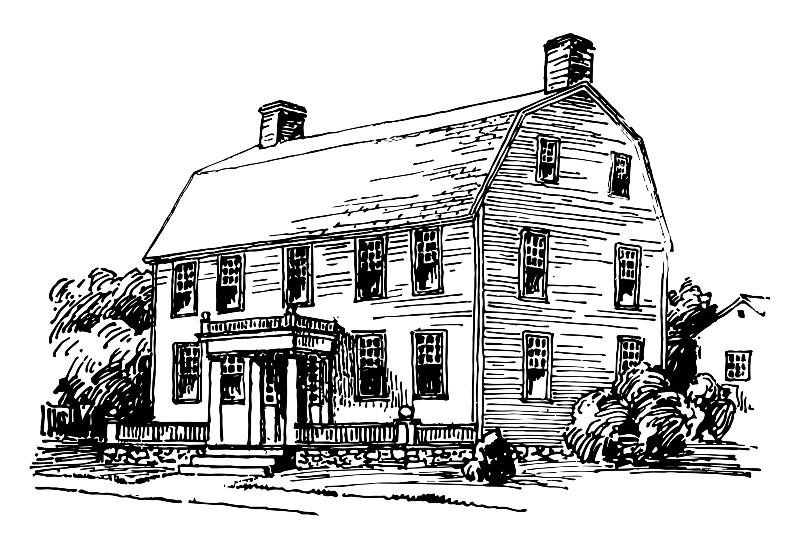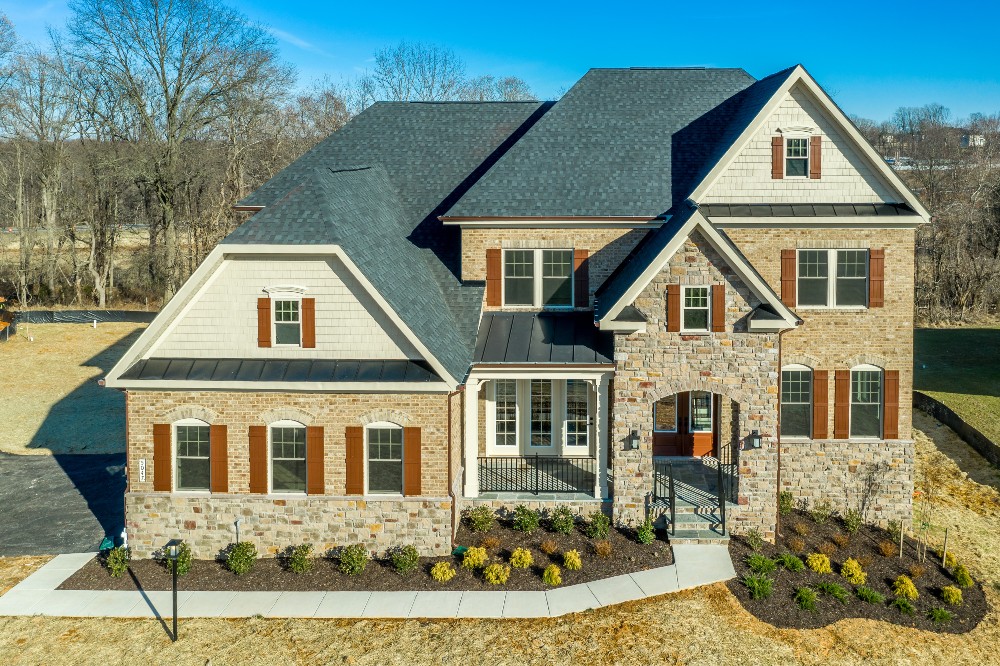There are all sorts of different roofing styles available to modern homeowners. While some offer contemporary aesthetics, others provide intriguing old world charm. With their classic barn-style appearance, gambrel roofs are a good example. Read on to learn the benefits of this classic roofing design.
The Basics
The term “gambrel roof” typically refers to a symmetrical two-sided roof with a pair of slopes on either side. Known as a “Dutch roof” in eighteenth-century England, these structures have been around for centuries. With this design, the lower slope is built at a steep angle, while the upper slope is built at a shallow angle
This essentially brings all the benefits of a sloped roof while providing maximum headroom within the home’s upper level. It also effectively shortens what would otherwise be a taller roof, while creating a unique polygonal-arch shape that provides expansive volume to the attic or top floor space.
Historically, Europeans failed to distinguish between a mansard roof and a gambrel roof, calling both kinds “mansards.” In the U.S., various shapes of gambrels are occasionally called Dutch gambrel or, in some instances, Dutch Colonial gambrel with bell-cast eaves, French, English, German, Swedish or New England gambrel.
If you cross-sectioned a gambrel roof, it would look similar to a mansard roof. That said, the gambrel will have vertical gable ends and will not be hipped at the four corners of the structure. Also, a gambrel roof will normally overhang the facade, whereas mansard roofs typically do not.
Gambrels need to be framed out by builders, so they will typically construct a series of trusses with identical measurements. The number of trusses depends on the size of the roof. This is often done by assembling wooden boards on a flat surface. Both sides of the truss will have two beams reinforced with gusset plates. Once the trusses are finished, they are then raised into place atop the structure.

What Are the Benefits?
Gambrels aren’t uncommon on residential houses, especially those built in Scandinavian and Dutch architectural styles. You will also see them atop some variations of Tudor-style homes, but you’re more likely to associate them with barn-style structures.
Aesthetically, gambrels are a “love them or hate them” choice. Some people adore their character and old world charm, while others find their barn-style appearance inappropriate for modern suburban homes. With that said, there are plenty of reasons to consider a gambrel-style roof, including:
Very good drainage: Ice, snow and water don’t tend to build up on gambrel roofs.
Easier construction: Gambrel roofs are relatively easy to assemble compared to many other modern roofing styles. This tends to affect overall costs in a positive way, while resulting in faster completion times.
Spacious: If you’ve ever stood inside a barn and looked up at the vast space overhead, you can appreciate the incredible added volume gambrels provide. From a farmer’s perspective, this helps promote air circulation and trap warmth. From a homeowner’s perspective, gambrels vastly increase the size of attics or partial extra stories of a house.
Cost-effective: A gambrel’s steep slopes can be intimidating to many homeowners. For a professional roofer, however, these structures are quite easy to maintain and repair. This can make them a more cost-effective option in the long-term.
A stylish statement: While some people worry a gambrel roof will make their house look like a barn; these structures actually tend to give homes a bold and distinct look with some intriguing old world charm.
The lifespan of gambrels depends on several factors, including the area’s climate, the installation process, the materials needed, the roof design, and the quality and amount of maintenance the roof receives over time. For instance, a professionally installed gambrel that’s covered by metal or another durable material can last up to a full century. Gambrels covered with other materials such as asphalt or wood will have a much shorter lifespan of about 15-25 years on average.
If you’re weighing the pros and cons of a gambrel roof, the experts at A to Z Roofing can help you make an informed decision. For decades, A to Z Roofing has specialized in residential and commercial roofing, restoration and repair. A locally owned Colorado business, we’ve operated continuously throughout the Denver metro area and the entire Front Range for nearly a quarter of a century. During this time, we’ve served the needs of homeowners and local businesses, providing expert service using top-quality products. Contact our team of attentive professionals to get a free estimate and learn how we can restore, repair or replace your damaged or aging roof.

